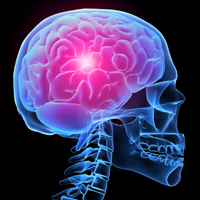Article
Researchers Find Link Between Pain and Comorbid Psychiatric Conditions
Author(s):
Study results suggest that brain inflammation resulting from chronic nerve pain appears to alter activity in brain regions that regulate mood and motivation. The findings indicate, for the first time, a direct biophysical relationship between long-term pain and the co-morbid anxiety, depression, and substance abuse observed in more than 50% of patients with chronic nerve pain.

Recently published study results suggest that brain inflammation resulting from chronic nerve pain appears to alter activity in brain regions that regulate mood and motivation. The findings indicate, for the first time, a direct biophysical relationship between long-term pain and the co-morbid anxiety, depression, and substance abuse observed in more than 50% of patients with chronic nerve pain.
The study investigators— led by Catherine M. Cahill, Associate Professor in the Department of Anesthesiology and Perioperative Care at the University of California, Irvine School of Medicine—found that pain-derived brain inflammation caused accelerated growth and activation of microglia in mice and rats, an important finding as these immune cells have been shown to trigger chemical signals within neurons that restrict the release of dopamine.
In the June 3, 2015 online issue of the Journal of Neuroscience, the researchers write, “Using in vivo microdialysis and microinjection of drugs into the mesolimbic DA system, we demonstrate in mice and rats that microglial activation in the VTA compromises not only opioid-evoked release of DA, but also other DA-stimulating drugs, such as cocaine. Our data show that loss of stimulated extracellular DA is due to impaired chloride homeostasis in midbrain GABAergic interneurons.”
The 5-year study sheds light on why opioids such as morphine are often ineffective against chronic pain. Whereas morphine and its derivatives work by stimulating the release of dopamine, Dr. Cahill and colleagues discovered that these agents were unable to stimulate a dopamine response, which resulted in impaired reward-motivated behavior. Treating the rodents with chronic pain with a medication that inhibited microglial activation restored dopamine release and reward-motivated behavior, according to the researchers.
“For over 20 years, scientists have been trying to unlock the mechanisms at work that connect opioid use, pain relief, depression and addiction,” said Dr. Cahill. “Our findings represent a paradigm shift which has broad implications that are not restricted to the problem of pain and may translate to other disorders.”
The study results suggest new approaches to treating the approximately one-quarter of Americans who suffer from chronic pain, the most common form of enduring illness for patients younger than 60. Such treatments could help decrease the estimated $635 billion spent annually in the US to treat chronic pain.
As a follow-up study, Dr. Cahill’s study team seeks to establish that pain-derived changes in human brain circuitry can account for mood disorders. “We have a drug compound that has the potential to normalize reward-like behavior,” said Dr. Cahill, “and subsequent clinical research could then employ imaging studies to identify how the same disruption in reward circuitry found in rodents occurs in chronic pain patients.”




